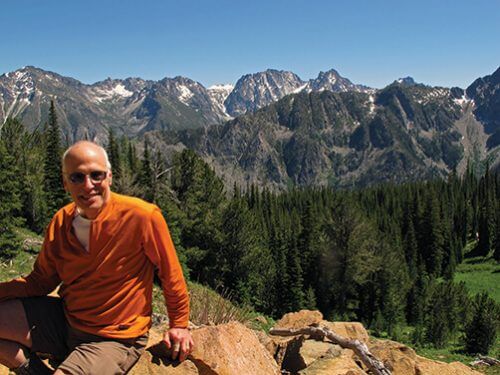A conversation with Michael Fagin, a meteorologist whose weather forecasts are a matter of life and death / Rachel Newer

Mount Everest throws countless challenges in the way of the adventurers.Michael Feigin, a meteorologist from Seattle, is the man that cautious climbers turn to. Large expeditions as well as daring independent climbers use his services every spring to get daily weather forecasts on Everest and other peaks in the Himalayan range. Here are edited excerpts from the interview with him.
What makes the weather on Mount Everest special?
Winds of more than 150 km/h are not uncommon there, but in May, the busiest climbing period, just before the start of the monsoon season, there are usually a few days with more reasonable winds (below 30 km/h). Other unusual atmospheric conditions to watch out for are cyclones that form in the Bay of Bengal. Although Mount Everest is 2,400 kilometers north of there, and not at sea level, these storms can have a great impact on the mountain due to the precipitation they bring with them.
How is the weather forecast on Mount Everest different from the weather forecast in Seattle, for example?
The biggest difference is the lack of real-time weather observations. After I make a forecast I cannot verify its accuracy because there are no weather stations on the mountain. I therefore depend on climbers sending me observations by e-mail. Another difference is that the models used to make forecasts for a place like Seattle have a wealth of details at the local level, and in contrast, the models used to forecast the weather on Everest are not even on a regional scale but on a global scale: models of the entire continent of Asia or of the Himalayan range.
2015 saw a record number of applications for Everest climbing permits, but it was also the first year in 41 years that no one managed to reach the summit. Access to the mountain was completely banned following the deadly earthquake that occurred in April and the avalanches that followed.
What does a typical working day look like for you during the climbing season?
At five in the morning I go over the feedback I get from climbers about the previous day's forecast to see which of the six models I use produced the most accurate results. This could be, for example, the model of the US Navy's Operational Global Atmospheric Prediction System, or the model of the European Center for Medium-Range Weather Forecasting. I also look at information that comes from parties other than my customers on Twitter, Facebook, Instagram and various blogs. If one of the models is more accurate than others for a few days I give it more weight in weighing the results. I finish work around nine in the morning, but the climbers in Nepal are more than half a day ahead of me and the first thing they want to see in the morning is weather updates. And so I look at the data again at seven in the evening (according to my watch) and update the forecast as needed.
How do you reflect in your predictions their degree of certainty?
I always add a "certainty rating" to my predictions, and this is very important because sometimes I am very sure of them and sometimes I am not.
Have climbers gotten mad at you because of some forecast?
There was a year when on one Tuesday winds blew at the summit at a speed of 160 km/h and I told the head of the expedition that strong winds would continue to blow on the following two days, on Wednesday and Thursday. He therefore led the whole group back to a lower camp. But someone in the group got very angry because in the end, on Thursday the winds weren't particularly strong, but it was already too late to reach the top.
